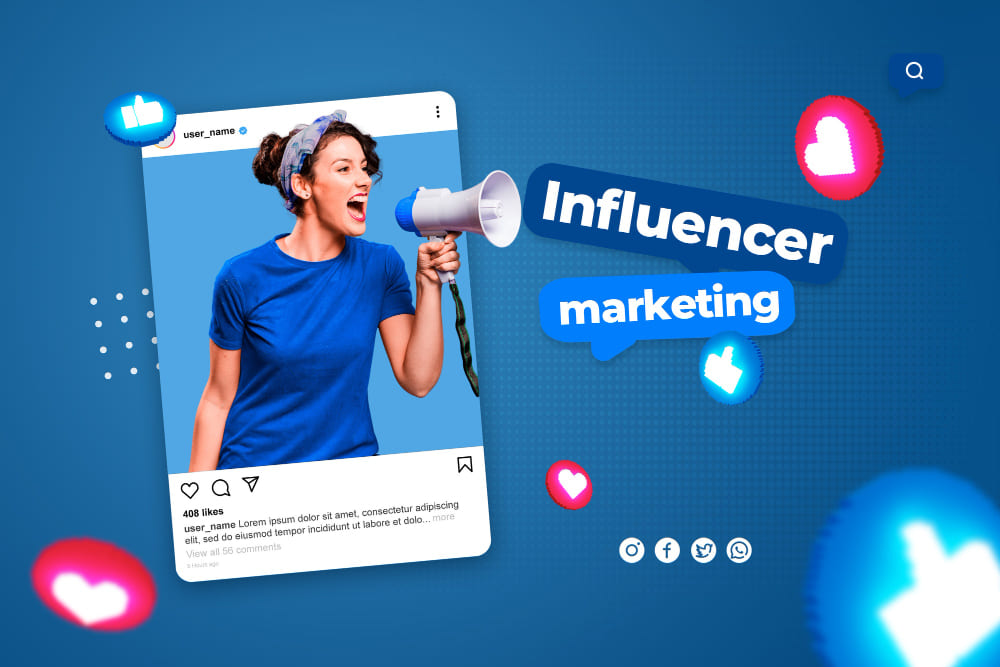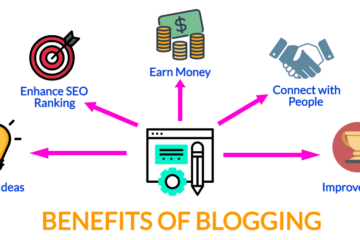What is the New Wave Of Influencer Marketing?
Over the past few years, influencer marketing has become a crucial component of digital advertising strategies. But with the ever-changing social media landscape and evolving consumer behavior, we’re now witnessing a fresh wave of influencer marketing.
This article dives into the inventive approaches, trends, and strategies that define this new wave of influencer marketing. It sheds light on its potential impact on both brands and consumers.
How Does Influencer Marketing Work?
Influencer marketing is a clever way for brands to promote their products or services by teaming up with people with significant followers on social media. Instead of relying on celebrities, this strategy involves partnering with relatable individuals who act as friendly representatives for the brand. They help generate interest among consumers without making it seem like an obvious advertisement. What makes influencer marketing even more appealing is its cost-effectiveness compared to traditional celebrity endorsements. By tapping into social media platforms where people already spend a lot of time, brands can reach potential customers more effectively.
How Does the Early Influencer Marketing Differ from The new wave Influencer Marketing Model?
The old and new forms of influencer marketing differ in various ways. In the past, influencers relied on celebrities and mass media for product endorsements. However, the new approach values authenticity and trust, using micro-influencers with smaller but engaged followings.
Also Read: Latest Trends in Digital Marketing In 2023
Traditional influencer marketing aims for broad reach through TV, radio, and print. At the same time, the new wave focuses on social media platforms like Instagram, YouTube, and TikTok to target specific demographics and communities.
Content creation has also changed. Previously, influencer marketing involved scripted ads, but now it emphasizes organic and creative content that connects with the audience while integrating brand messaging naturally.
Measurement metrics have shifted from reach and impressions to engagement rates, conversion rates, and ROI. Brands now measure influencer collaborations based on actual business outcomes.
Long-term partnerships are becoming more popular, allowing deeper brand integration and consistent messaging and fostering authentic connections with the influencer’s audience.
Influencer selection has become more strategic, considering audience demographics, niche expertise, content quality, and influencer credibility rather than just follower count.
The new wave of Influencer Marketing
Here is a rundown of ways influencer marketing is slowly carving out a new path from the conventional influencer marketing we are used to.
Authenticity and Transparency
One important aspect of the modern influencer marketing trend is the focus on being genuine and open. Nowadays, consumers are more discerning and desire authentic connections with brands and influencers. Instead of the overly polished and meticulously crafted content from before, people now want real and relatable experiences.
In response to this shift, influencers share their vulnerabilities, personal stories, and opinions more frequently, adding authenticity to their content. Brands also collaborate with influencers who share their values, ensuring that sponsored posts blend seamlessly with the influencer’s regular content. This approach helps to establish trust and build stronger connections with the audience.
The Rise of Micro-Influencers
In the world of influencer marketing, we’ve seen a shift from macro-influencers with massive follower counts to the emergence of micro-influencers. These micro-influencers may have fewer followers but have an incredibly engaged audience within specific niche communities. Their approachability and reliability set them apart, which gives their recommendations and endorsements greater influence.
Brands have recognized micro-influencers potential and are now directing their attention towards them. By partnering with micro-influencers, brands can create more targeted and personalized campaigns. They can tap into the trust and authenticity of micro-influencers, allowing them to connect with a highly engaged audience and drive meaningful conversions.
Long-term Partnerships and Brand Ambassadors
Unlike temporary collaborations, the current trend in influencer marketing focuses on forming long-term partnerships and cultivating brand ambassadors. Brands now understand the importance of building enduring relationships with influencers, enabling a deeper understanding of the brand and fostering the creation of more authentic content.
Also Read: Is SEO Still Important?
By engaging in continuous collaborations, influencers transform into genuine advocates and ambassadors for the brand. This approach establishes trust and cultivates loyalty among the audience. Consumers tend to place more confidence in influencers who consistently promote a brand they genuinely support, unlike those who frequently switch between various partnerships.
Niche Markets and Personalization
Influencer marketing is changing, and brands recognize the impact of focusing on particular niche markets. Rather than trying to reach everyone, they now understand the value of teaming up with influencers who truly understand their target audience. These influencers have cultivated communities centred around specific interests or lifestyles, which allows brands to reach enthusiastic and engaged audiences.
Customization is also crucial in the current era of influencer marketing. Brands are partnering with influencers to develop content specifically designed to cater to the preferences and needs of their audience. Whether it involves personalized product recommendations or tailored storytelling, this approach enables brands to establish a stronger bond with their intended consumers.
Diversification of Platforms and Content Formats
Back in the day, influencer marketing mainly revolved around platforms like Instagram and YouTube. But things have changed with the latest developments in influencer marketing. People now understand the significance of diversifying platforms and content formats. Influencers are expanding their reach across various social media channels, including TikTok, Snapchat, and LinkedIn, so they can connect with different groups of people and interact with audiences in fresh and innovative ways.
In addition, the surge in short-form content, such as Instagram Stories and Snapchat Snaps, has opened up exciting possibilities for authentic and real-time interactions. Brands increasingly use these platforms to create temporary and spontaneous content that resonates with audiences craving genuine connections.
FAQs
Why is influencer marketing significant in 2023?
By strategically organizing and choosing suitable influencers, influencer marketing can yield remarkable outcomes for your brand, enhance your online visibility, and boost sales. Brands that neglect to invest in this expanding marketing approach may risk lagging behind their competitors in the digital era.
What is the trend in influencer content for 2023?
One of the influencer marketing trends in 2023, driven by the need for more genuine content, is the growing preference for employee-driven or employee-based content. The impact of user-generated content on sales and brand perception has already been witnessed, highlighting the significance of this trend.
Conclusion
The new wave of influencer marketing emphasizes authenticity, transparency, and genuine connections. Influencers share personal stories and opinions, collaborating with brands that share their values, building trust and stronger audience connections. Micro-influencers also offer targeted campaigns and higher engagement in niche communities.




